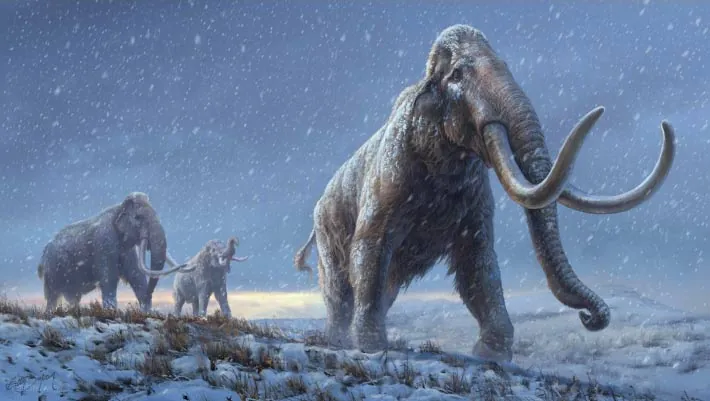
Unlocking the Secrets of Mammoth Evolution: Groundbreaking Genomic Discoveries
2025-04-10
Author: Jia
A Breakthrough in Mammoth Genomics
In an extraordinary leap for paleogenomics, scientists have uncovered and meticulously analyzed 34 new mitochondrial genomes from mammoths (Mammuthus spp.), including ancient specimens from the Early and Middle Pleistocene eras. Among these groundbreaking findings is the oldest known mammoth DNA in North America, hailing from a remarkable 200,000-year-old specimen discovered along the Old Crow River in Yukon Territory, Canada.
Ancient Insights into Mammoth Diversity
These revelations confirm earlier research that highlights significant distinctions between mammoths from around a million years ago and their later descendants. The analysis of ancient DNA from specimens dated to the Early Pleistocene (2.6 million to 780,000 years ago) and Middle Pleistocene (780,000 to 126,000 years ago) stages provides invaluable insights into the deep-time evolutionary processes crucial for understanding how these majestic creatures evolved.
Challenges in Ancient DNA Research
Unfortunately, obtaining deep-time DNA remains a challenge, with only a handful of studies successfully gathering comprehensive genomic data from ancient representatives. Dr. J. Camilo Chacón-Duque from Stockholm University emphasizes that this research offers an unprecedented view into the demographic events that shaped mammoths' genetic diversity over the ages.
Evolutionary Insights Through New Techniques
By integrating the 34 new mitogenomes with over 200 previously published mitochondrial genomes, researchers uncovered that diversification events in mammoths align with significant demographic shifts during the Pleistocene. This study not only supports the theory of an ancient Siberian origin for mammoth lineages but also sheds light on how population dynamics influenced the expansion and contraction of distinct genetic clades.
The Future of Genomic Studies
Dr. Jessica A. Thomas Thorpe from the Wellcome Sanger Genome Institute notes that while mitochondrial genomes have been somewhat sidelined due to technological advancements, their abundance compared to nuclear DNA makes them invaluable for evolutionary biology. This research not only enhances our grasp of mammoth evolution but also significantly contributes to the broader field of ancient DNA studies.
Advancements in Dating Techniques
The team introduced an enhanced molecular clock dating framework that revolutionizes how genetic data can be utilized to estimate specimen ages beyond the limits of radiocarbon dating. Such advancements present a powerful new tool for future explorations of extinct and endangered species.
Exciting Prospects for the Future
Professor Love Dalén from Stockholm University expressed his enthusiasm about the study, stating, "We now have genetic data from a wider array of mammoth specimens spanning the last million years, helping us unravel the timeline of mammoth diversity evolution." The findings have been published in the esteemed journal, Molecular Biology and Evolution, marking a significant milestone in our understanding of these iconic ice age giants.




 Brasil (PT)
Brasil (PT)
 Canada (EN)
Canada (EN)
 Chile (ES)
Chile (ES)
 Česko (CS)
Česko (CS)
 대한민국 (KO)
대한민국 (KO)
 España (ES)
España (ES)
 France (FR)
France (FR)
 Hong Kong (EN)
Hong Kong (EN)
 Italia (IT)
Italia (IT)
 日本 (JA)
日本 (JA)
 Magyarország (HU)
Magyarország (HU)
 Norge (NO)
Norge (NO)
 Polska (PL)
Polska (PL)
 Schweiz (DE)
Schweiz (DE)
 Singapore (EN)
Singapore (EN)
 Sverige (SV)
Sverige (SV)
 Suomi (FI)
Suomi (FI)
 Türkiye (TR)
Türkiye (TR)
 الإمارات العربية المتحدة (AR)
الإمارات العربية المتحدة (AR)